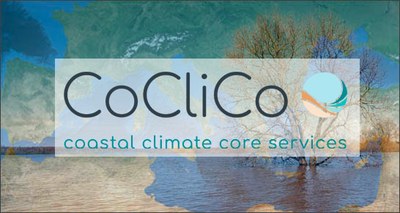Climate: ENEA in EU project for first coastal flood risk mapping
11/11/2021
 Creating the first European climate service to map coastal territories at risk of inundation in order to plan land use and secure the existing critical infrastructures. This is the goal of the EU project CoCLiCO (Coastal CLimate COre Services), funded by the Horizon 2020 program with about 6 million euro, comprising 18 partners [1] - including ENEA- the only Italian research body participating, which has the task of preparing sea level rise flood maps for the entire Mediterranean and Black Sea area.
Creating the first European climate service to map coastal territories at risk of inundation in order to plan land use and secure the existing critical infrastructures. This is the goal of the EU project CoCLiCO (Coastal CLimate COre Services), funded by the Horizon 2020 program with about 6 million euro, comprising 18 partners [1] - including ENEA- the only Italian research body participating, which has the task of preparing sea level rise flood maps for the entire Mediterranean and Black Sea area.
ENEA will provide its innovative model for very high-resolution climate projections (up to 70 meters in the straits of Gibraltar and the Dardanelles), capable of realistically simulating the water and heat exchange occurring between the Atlantic Ocean and the Mediterranean and between the Black and Mediterranean Seas. The ENEA model is the first Mediterranean scale climate model capable of effectively representing tides and their interaction with sea currents.
ENEA, in collaboration with Federlogistica, the other Italian partner of the EU project, will use this data to fine-tune predicting models in order to identify the areas at risk of sea level rise, with particular attention to Italian ports.
Specifically, CoCliCo will develop an open web-platform with real-time high definition maps [2] and geophysical data [3] of the coastal areas most at risk of flooding in Europe, in order to develop future scenarios for sea level rise, plan the territory and prepare adaptation strategies to climate change, for example of coastal defense infrastructures.
The potential impact of coastal flooding is a major concern for Europe since many infrastructures are located close to shorelines or in low-lying areas. In Italy, for example, in addition to Venice, many other coastal cities such as Naples, Cagliari, Palermo, Genoa, Livorno and Brindisi are at risk. But Italy, compared to countries like Holland, lacks a resilience plan without which, in the coming decades, the most likely scenario will see Italian ports no longer usable, trade diverted to other countries, beaches wiped out, critical infrastructures and cultural and real estate heritage jeopardized.
“The sea level is expected to rise by at least 30-60 cm by 2100 even if climate change mitigation targets agreed in Paris are met. And that's not all. This phenomenon will continue even after 2100 due to the excess heat produced by anthropogenic global warming, thus far absorbed by the oceans, which accounts for approximately 40% of the total heat absorbed by the Earth", explained Gianmaria Sannino, head of the ENEA Laboratory of Climate Modeling and Impacts.
In the first phase of the project, the platform 'CoCLiCO' will be tested by the so-called 'Champion Users' -members of the stakeholder group and independent experts (for Italy Confcommercio and Civil Protection)- who will use the functions and data available, including the map of the European coastal infrastructures at risk, to identify the most appropriate adaptation solutions.
[1] The project is coordinated by the French Bureau De Recherches Geologiques et Minieres
[2] Target resolution from 25 to 100 meters, with zoom up to 1 meter, where possible, for example in France
[3] Sea level rise, wave pattern, coastal flooding, impact of erosion
